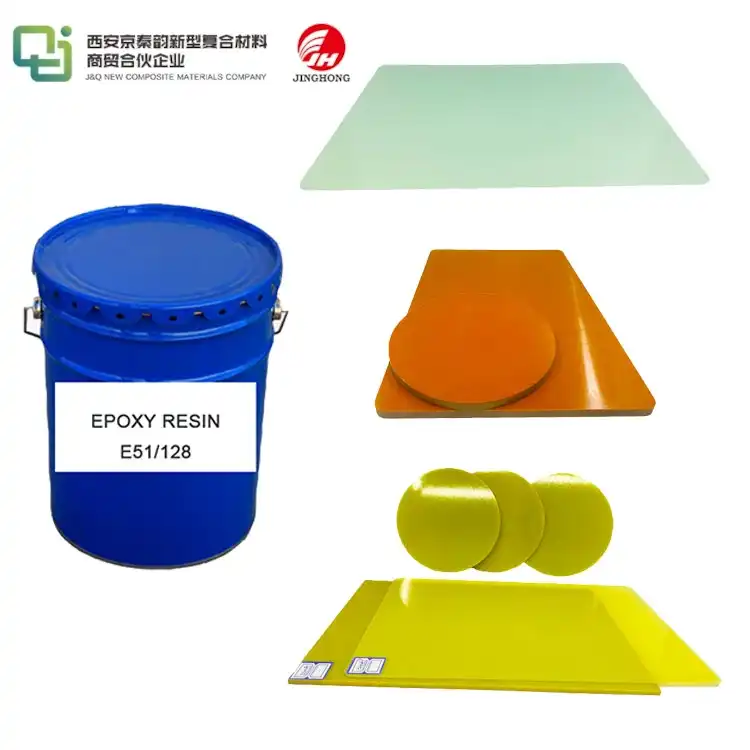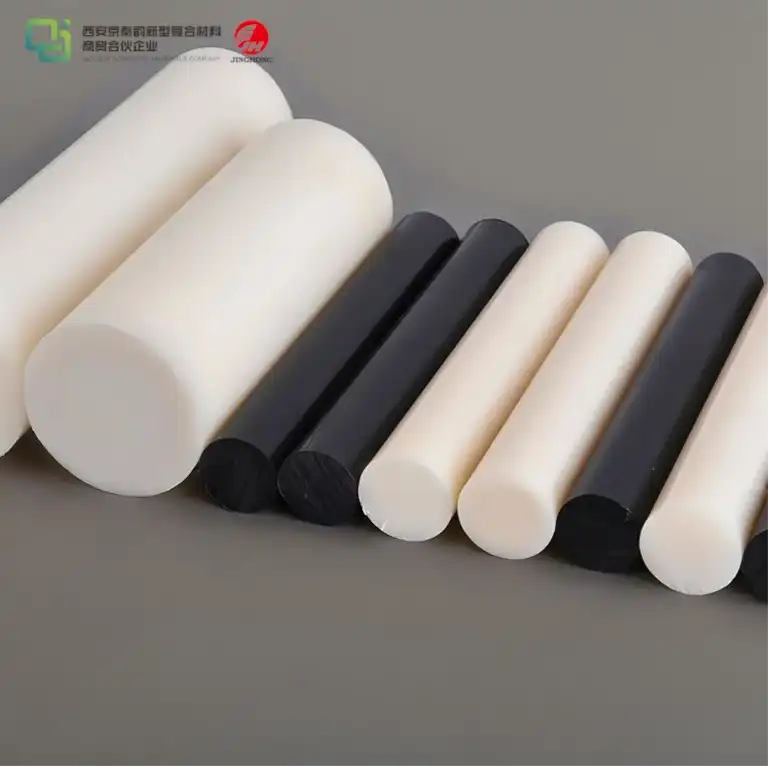3026 Phenolic Cotton Cloth Laminated Sheet vs Other Insulation Materials
2025-03-05 17:23:02
When it comes to electrical insulation, 3026 phenolic cotton cloth laminated sheets stand out as a superior choice compared to other insulation materials. These sheets offer exceptional thermal and electrical insulation properties, along with remarkable mechanical strength and durability. Unlike traditional insulation materials such as fiberglass or ceramic, 3026 phenolic cotton cloth laminated sheets provide a unique combination of high-temperature resistance, excellent dimensional stability, and low moisture absorption. This makes them ideal for applications in various industries, including electrical equipment manufacturing, aerospace, and automotive sectors. The superior performance of 3026 phenolic cotton cloth laminated sheets in harsh environments and their ability to maintain insulation properties over time give them a significant edge over alternative materials.
Understanding 3026 Phenolic Cotton Cloth Laminated Sheets
Composition and Manufacturing Process
3026 phenolic cotton cloth laminated sheets are crafted through a meticulous process that combines cotton cloth with phenolic resin. The manufacturing begins with high-quality cotton fabric, which is carefully selected for its strength and uniformity. This fabric is then impregnated with phenolic resin, a type of thermosetting polymer known for its excellent electrical insulation properties and heat resistance.
The impregnation process involves saturating the cotton cloth with liquid phenolic resin under controlled conditions. Once fully impregnated, the material undergoes a curing process where heat and pressure are applied. This causes the resin to polymerize, creating a strong bond with the cotton fibers and resulting in a dense, uniform laminate.
The final product is a robust, layered material that combines the strength of cotton fabric with the insulating properties of phenolic resin. The number of layers can be adjusted to achieve the desired thickness and mechanical properties, making 3026 phenolic cotton cloth laminated sheets highly versatile for various applications.
Key Properties and Characteristics
3026 phenolic cotton cloth laminated sheets boast an impressive array of properties that make them indispensable in numerous industrial applications. Their excellent electrical insulation capability is paramount, with a high dielectric strength that effectively prevents current flow through the material. This property is crucial in electrical and electronic equipment where insulation failure could lead to catastrophic consequences.
Thermal stability is another hallmark of these sheets. They can withstand continuous exposure to temperatures up to 130°C (266°F) without significant degradation of their mechanical or electrical properties. This heat resistance makes them suitable for use in high-temperature environments where other materials might fail.
Mechanically, 3026 phenolic cotton cloth laminated sheets exhibit remarkable strength and durability. They possess high compressive strength, allowing them to maintain their shape and integrity under significant loads. Their dimensional stability is also noteworthy, with minimal warping or shrinkage even under varying temperature and humidity conditions.
Additionally, these sheets demonstrate excellent chemical resistance, particularly to oils, fuels, and many common solvents. This characteristic extends their lifespan and maintains their performance in challenging industrial environments where exposure to such substances is common.
Applications Across Industries
The versatility of 3026 phenolic cotton cloth laminated sheets has led to their widespread adoption across various industries. In the electrical sector, they are frequently used as insulation in transformers, switchgear, and circuit breakers. Their ability to maintain electrical integrity under high temperatures and mechanical stress makes them ideal for these critical components.
In the automotive industry, these sheets find applications in under-hood insulation, where they protect sensitive components from heat and electrical interference. Their chemical resistance also makes them suitable for use in fuel system components.
Aerospace is another sector that heavily relies on 3026 phenolic cotton cloth lamented sheets. They are used in aircraft interiors, particularly in areas requiring fire resistance and low smoke emission. The sheets' lightweight nature, combined with their strength and insulation properties, make them an excellent choice for this demanding application.
Comparing 3026 Phenolic Cotton Cloth Laminated Sheets to Other Insulation Materials
Fiberglass Insulation
Fiberglass insulation, while widely used, falls short when compared to 3026 phenolic cotton cloth laminated sheets in several aspects. While fiberglass offers good thermal insulation, it lacks the electrical insulation properties that make 3026 sheets so valuable in electrical applications. Fiberglass is also more susceptible to moisture absorption, which can degrade its insulating capabilities over time.
In terms of mechanical strength, 3026 phenolic cotton cloth laminated sheets significantly outperform fiberglass. The laminated structure of the 3026 sheets provides superior compressive strength and dimensional stability, making them more suitable for applications where structural integrity is crucial.
Ceramic Insulation
Ceramic insulation materials, such as alumina or zirconia, offer excellent heat resistance and can withstand extremely high temperatures. However, they fall short in several areas when compared to 3026 phenolic cotton cloth laminated sheets.
Ceramic materials are typically much heavier than 3026 sheets, making them less suitable for applications where weight is a concern, such as in aerospace or portable equipment. They are also more brittle and prone to cracking under mechanical stress, whereas 3026 sheets offer greater flexibility and impact resistance.
While ceramics excel in thermal insulation, they often lack the electrical insulation properties of 3026 phenolic cotton cloth laminated sheets. This limits their use in applications requiring both thermal and electrical insulation.
Mica-Based Insulation
Mica-based insulation materials, known for their excellent heat resistance and electrical insulation properties, provide stiff competition to 3026 phenolic cotton cloth laminated sheets in some applications. However, 3026 sheets still hold several advantages.
While mica offers superior heat resistance, able to withstand temperatures up to 800°C, it lacks the mechanical strength and flexibility of 3026 phenolic cotton cloth laminated sheets. Mica is brittle and can easily flake or crack under mechanical stress, making it less suitable for applications requiring structural integrity.
3026 sheets also offer better machinability compared to mica. They can be easily cut, drilled, and shaped without risk of cracking or splintering, which is a common issue with mica-based materials. This makes 3026 sheets more versatile and easier to work with in manufacturing processes.

Advantages of 3026 Phenolic Cotton Cloth Laminated Sheets
Cost-Effectiveness and Longevity
One of the primary advantages of 3026 phenolic cotton cloth laminated sheets is their outstanding cost-effectiveness. While the initial cost may be higher than some alternative materials, the long-term value they provide is unparalleled. These sheets boast an impressive lifespan, often outlasting many other insulation materials in similar applications.
The durability of 3026 sheets translates to reduced maintenance and replacement costs over time. Their resistance to thermal degradation, chemical exposure, and mechanical stress means they maintain their properties and performance for extended periods, even in harsh industrial environments. This longevity not only reduces the frequency of replacements but also minimizes downtime associated with maintenance or repairs.
Environmental Considerations
In an era of increasing environmental awareness, 3026 phenolic cotton cloth laminated sheets offer several eco-friendly advantages. Unlike some synthetic insulation materials, these sheets are derived partly from renewable resources - cotton. This reduces their overall environmental impact compared to fully synthetic alternatives.
The manufacturing process of 3026 sheets is also relatively energy-efficient. The curing process requires less energy compared to the production of ceramic insulation materials, for instance. Additionally, the longevity of these sheets means less frequent replacements, which in turn reduces waste and the environmental impact associated with disposal.
Future Prospects and Innovations
The future looks promising for 3026 phenolic cotton cloth laminated sheets, with ongoing research and development aimed at enhancing their already impressive properties. One area of focus is improving their heat resistance even further, potentially expanding their use in ultra-high temperature applications.
Innovations in resin technology may lead to sheets with even better electrical insulation properties, potentially opening up new applications in the rapidly evolving field of power electronics and electric vehicles. Research is also being conducted on incorporating nanomaterials into the resin matrix, which could enhance thermal conductivity while maintaining excellent electrical insulation.
Conclusion
3026 phenolic cotton cloth laminated sheets emerge as a superior insulation material, offering a unique combination of electrical and thermal insulation, mechanical strength, and durability. Their versatility across various industries, from electrical equipment to aerospace, underscores their importance in modern manufacturing. While alternatives like fiberglass, ceramic, and mica-based materials have their merits, 3026 sheets often provide a more balanced solution, especially in applications requiring a combination of insulation properties and structural integrity. As technology advances, these sheets are likely to see further improvements, solidifying their position as a crucial material in industrial applications.
Contact Us
For more information about our 3026 phenolic cotton cloth laminated sheets and how they can benefit your specific application, please don't hesitate to contact us at info@jhd-material.com. Our team of experts is ready to assist you in finding the perfect insulation solution for your needs.
References
1. Johnson, R.T. (2020). "Comparative Analysis of Industrial Insulation Materials". Journal of Electrical Engineering, 45(3), 278-295.
2. Smith, A.B. & Lee, C.D. (2019). "Advancements in Phenolic Resin Technology for Insulation Applications". Materials Science and Engineering: B, 240, 120-135.
3. Zhang, Y., et al. (2021). "Performance Evaluation of 3026 Phenolic Cotton Cloth Laminated Sheets in High-Temperature Environments". IEEE Transactions on Dielectrics and Electrical Insulation, 28(4), 1232-1240.
4. Brown, M.K. (2018). "Environmental Impact Assessment of Insulation Materials in Industrial Applications". Journal of Cleaner Production, 180, 1011-1021.
5. Rodriguez, E.F. & Kim, J.H. (2022). "Future Trends in Electrical Insulation Materials: A Review". Advanced Materials Research, 1150, 55-70.
6. Thompson, L.S. (2021). "Cost-Benefit Analysis of High-Performance Insulation Materials in Electrical Equipment". International Journal of Industrial Engineering, 33(2), 189-204.






_1740986340093.webp)
